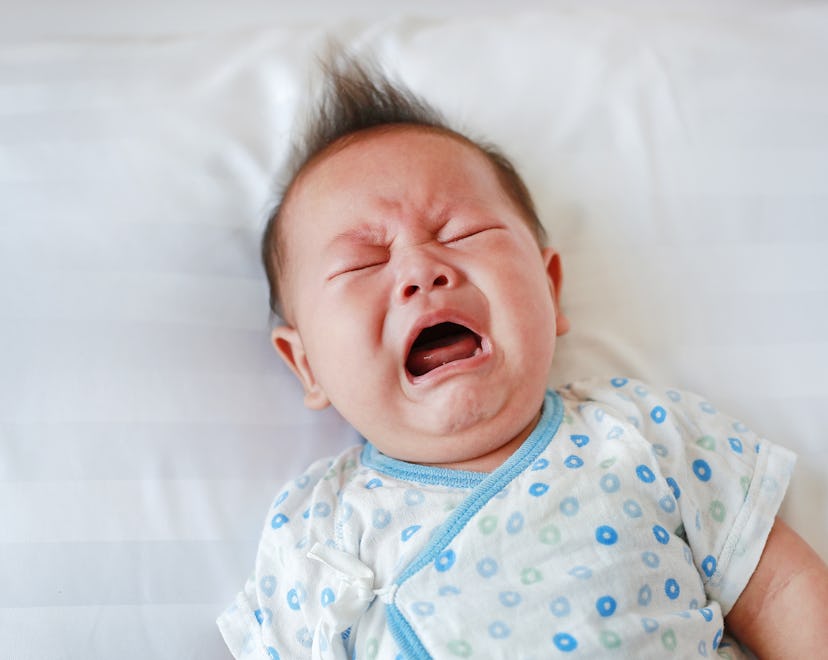Sleep

Your Baby’s Reason For Crying When They’re Sleepy Is Totally Relatable
Just give in to the sandman already, kid.
Seeing a mama struggling with a screaming toddler is hard. With the look of exhaustion and embarrassment on her face while the child screams bloody murder, it’s easy to feel her pain. Then she, unfortunately, feels the need to explain and says, “He missed his nap,” or “She’s so sleepy.” We send all the empathy vibes because we’ve all been there. And trying to understand why a child cries when they’re sleepy is the bane to parenthood.
But the behavior is common and explainable.
“There can be a few different reasons why a child fights going to sleep. In infants and young toddlers, resisting sleep occurs because they have not yet developed object permanence which is the understanding that things exist when we cannot see them,” says Amy Marschall, Psy. D and licensed child psychologist.
This means that your child may not grasp that you’ll still be there after they wake up. “Going to sleep means they can't see the caretaker, and this is distressing,” Marschall tells Romper.
Sometimes this battle continues beyond the first few years, and sleepy time is not that part of the day you look forward to. “Even kids who have an understanding of object permanence can get separation anxiety from the parent leaving them at bedtime. Older children might resist sleep because they are having fun playing and don't want to stop even if they are tired,” says Marschall.
Adults don’t always have the best attitude when they are tired. And I can personally say my family doesn’t always like me if I haven’t had proper rest. Children are the same. They just express it by crying.
“Crying is their way to communicate discomfort when feelings of exhaustion start to mount,” Lea Lis, MD and board-certified child psychiatrist, tells Romper.
According to experts like pediatric sleep psychologist Lynelle Schneeberg, 80% of preschooler parents report that their kids have issues getting to sleep.
Here are some strategies to help.
Consistency is Key
“Having a set bedtime and a routine that is the same, or very similar, every day really helps kids not fight sleep. The specifics of the routine can be based on the individual family, but generally, it's good to wind down and not engage in activities that bring the heart rate up during the few hours before bed,” Marschall tells Romper.
Encourage Talking About Feelings and Be Creative with a Solution
Sometimes kids are anxious or afraid. Marschall says, “Parents can encourage them to share what they are afraid of. Anxiety isn't rational, so if a child says they are afraid of a monster, telling them there is no monster will likely not alleviate their anxiety. Instead, you can make monster spray or purchase a stuffed animal that has ‘magic powers’ to keep the child safe.”
Don’t Become a Crutch
Creating the space for your child to learn to sleep on their own is a must for the sake of your sleep cycle and theirs.
Lis says, “I would not get into the habit of staying in the room till they fall asleep or rubbing their back. It is important to make children great independent sleepers and let them self-soothe.” She suggests using transitional objects like a blanket or doll to help with the process.
Positive Reinforcement
Create your own way of rewarding your child for self-soothing.
Lis says you can, “Start a sticker chart, and if they stay in their room all night, give them stickers, rewards, and praise in the morning.”
It might take some time to break the crying habit, especially if you have a strong-willed child. But stay the course. They may not stop fully, but the crying times will start to cut short when they figure out how to calm themselves and drift to sleep.
“Sleep is the foundation to physical and mental health, as well as helping your child to grow and learn,” Lis says.
Experts:
Amy Marschall, Psy. D and licensed child psychologist
Lea Lis, MD and board-certified child psychiatrist
This article was originally published on